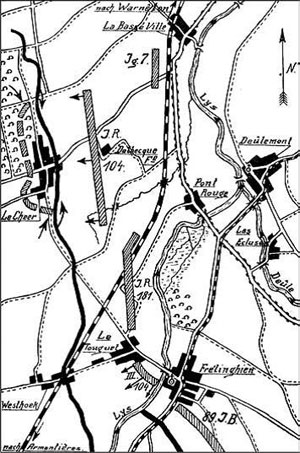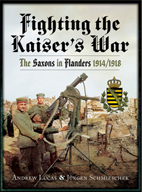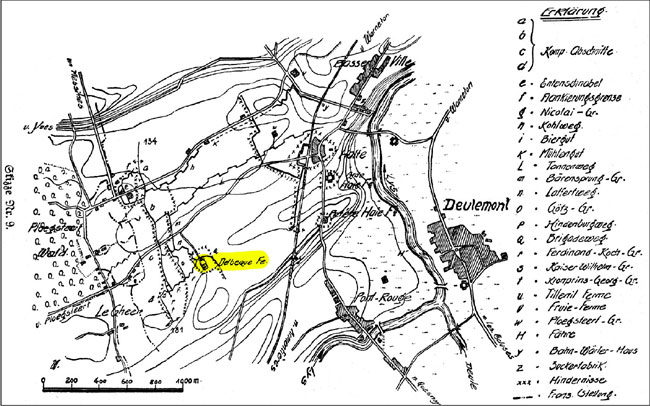CHAPTER 3 provides (we believe) the most detailed coverage yet seen in English of the famous Ploegsteert Wood sector from the German perspective, up until the departure of Saxon XIX. Armeekorps at the end of July 1916. For most of this period, this sector was the exclusive province of the 40. Infanterie-Division (and attached units), with its sister 24. Infanterie-Division on its left across the Lys.
Our coverage includes the right flank near the Douve, the notorious Entenschnabel or 'Birdcage' on the edge of the wood (where a huge unexploded mine still lurks) and the barricaded village of Le Touquet on the Lys. Mining warfare is covered at both Le Touquet and the Entenschnabel, where Saxon and Prussian Pioniere were locked in a prolonged and deadly underground struggle with British tunnellers.
In addition to the infantry, cavalry (sadly we have not yet find a photo of HR 19 in the trenches...) and Pioniere in - and below - the front line, we also take a look at the various artillery formations operating in support of the resident 40. Infanterie-Division throughout its residence on this front.
The chapter is enlivened with anecdotes from the regimental histories, relevant archival material and biographical spotlights on some notable officers of Kgl. Sächs. 7. Infanterie-Regiment 'König Georg' Nr. 106 who served in this sector in 1914-1915, such as a certain Oberleutnant Friedrich Olbricht (future leader of the German military resistance to Hitler).
Right: This sketch is one in a series of dozens by Werner Haenel of 4. Kompagnie / Kgl. Sächs. 5. Infanterie-Regiment 'Kronprinz' Nr.104, depicting recognisable locations in the regiment's trench system and rear area. I have identified no less than 52 different cards in this series, and cannot rule out the existence of more. The examples in my collection all have perforations along one edge - suggesting that they were sold as a complete bound series, from which individual cards could be torn out for use.
Readers used to British Army standards of security will be amazed to hear that Haenel's drawings were printed and freely sold as postcards in March 1915 (with place names only partially obliterated)! The value of one of these books of postcards to British intelligence would have surely been substantial.
For King and Kaiser includes several of Haenel's sketches together with a detailed trench map from the regimental history which identifies the locations.
This particular example of his work shows the trenches around Delbecque Ferme (Loophole Farm) on the regiment's left flank. Note the typically ineffectual censorship of the name at top left.

CHAPTER 3 not only covers the lengthy period of trench warfare between the Douve and Lys, but also the major fighting on this front in autumn 1914.
The fighting for Ploegsteert Wood that October and November is covered in much greater detail than the space available in Fighting the Kaiser's War permitted. We describe in detail how trench warfare set in on this front, and how the rudimentary positions established during the battle gradually evolved into a sophisticated trench system.
Naturally we also take a closer look at the Christmas Truce at and near Ploegsteert Wood, as well as the subsequent 'live and let live' arrangement and its implications.
Left: Map from the regimental history of IR 104, showing the situation on 20th October 1914.
Note that at the beginning of November, Kgl. Sächs. 7. Infanterie-Regiment 'König Georg' Nr.106 was committed to the assault on the wood, and subsequently held the line on its eastern edge over Christmas and up until March 1915 (after which IR 104 took over the extended sector as shown in the previous map).
We believe that the situation of IR 181 shown here is that depicted on the postcard below.
Above: This card is the work of an unknown artist from Kgl. Sächs. 15. Infanterie-Regiment Nr.181, the sister regiment of IR 104. It probably depicts their advance from the low ground on the west bank of the Lys up the railway embankment on 20th October 1914, when the Saxons made the first of their many bloody assaults on Ploegsteert Wood.

Above: Sample pages from For King and Kaiser (chapter 3).








